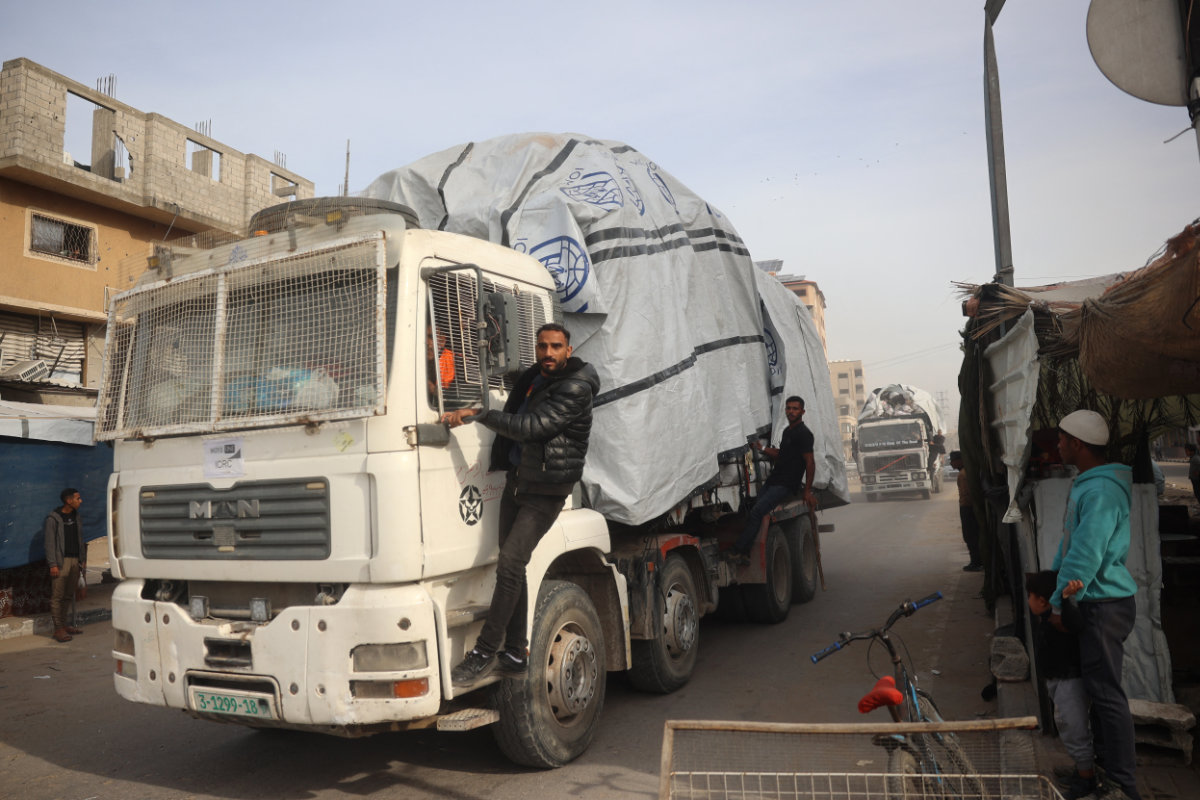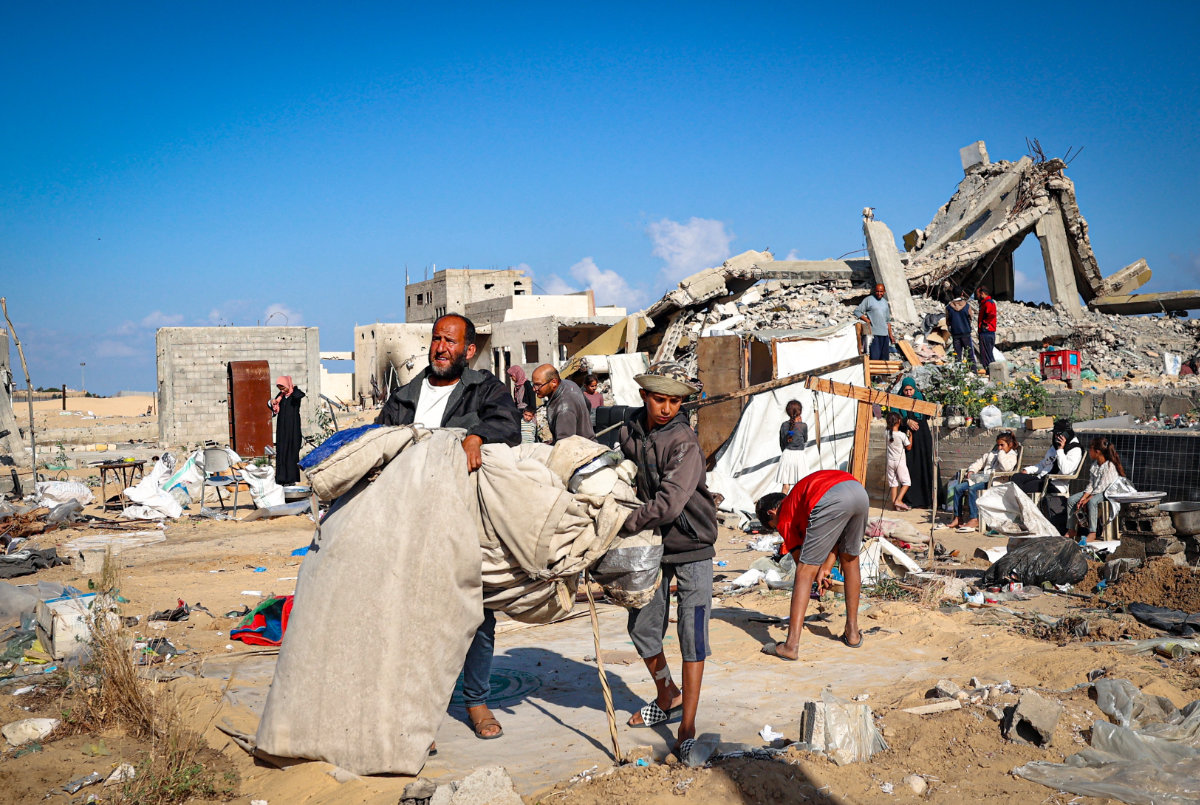BEIRUT: An Israeli combat drone on Wednesday targeted a motorcycle in the border town of Mays Al-Jabal, killing its rider, a Hezbollah member, and wounding another.
Hostilities between the Israeli army and Hezbollah intensified after the attack.
Throughout Tuesday night, the border area witnessed reciprocated strikes, which residents described as some of the most intense operations since the mobilization of the southern front around a year ago.
The escalation coincided with the arrival in Beirut of Josep Borrell Fontelles, the EU high representative for foreign affairs and security policy.
The border situation is expected to be high on the agenda during his meetings with Lebanese officials.
At dawn, Israeli warplanes carried out more than 15 airstrikes that targeted the forested area and orchards between the outskirts of the towns of Zibqin and Qlaileh, creating a belt of fire.
Video footage revealed the screams of children inside houses and the prayers of the elderly amid the earth-shattering explosions nearby.
Israeli warplanes also raided the outskirts of the towns of Yater and Rashaya Al-Fakhar, the orchards and valleys near the towns of Qlaileh, Zibqin, Al-Ḥaniyya, Majdal Zoun and Tayr Harfa, and the outskirts of the towns of Deir Seryan and Zawtar Al-Charkieh. The warplanes also carried out a raid on Naqoura.
Two Israeli drones exploded in the park of the village of Maroun Al-Ras, causing damages to facilities.
The Israeli army spokesman announced that it “targeted in four different areas in southern Lebanon about 30 Hezbollah rocket launchers and military structures that posed a threat to the citizens of Israel.” Their forces also targeted the Dhayra area in southern Lebanon with artillery shells.
The missile attacks raised questions about why Israel has been targeting the valleys daily for about two weeks.
Political analyst Ali Amin told Arab News that “despite the Israeli army facing challenges in its conflict with Hezbollah, it appears to be preparing for a prolonged war. It (the Israeli army) previously revealed the mobilization of the Mountain Brigade and plans to sever the eastern and western (mountain) ranges from southern Lebanon.”
Al-Amin, a resident of the border area, said: “The forested areas that have been bombed for two weeks are known to be off-limits to ordinary people and contain Hezbollah military bases, making it almost impossible to move around in them.
“Israel, following the severance of technological communication between the party’s (Hezbollah) members and its leadership, is actively working to fragment the southern region and place it under constant surveillance.”
He said that an increased level of shelling in forests and valleys, along with the failure to protect civilians in targeting Hezbollah, signaled a heightened risk.
It underscored, he added, the necessity of not assuming that Israel would refrain from targeting civilians in its bombardment of the south.
“This escalation may represent a new phase in the war, which is nearing its first anniversary.”
On Aug. 25, Israel targeted forested areas and valleys in the regions of Iqlim Al-Tuffah, Kunin, Zawtar, Rachaf, Deir Siriane, Chamaa, Rihan, Kfar Melki, Beit Yahoun, Ain Qana, Zebqin, Hadatha, and other villages, coinciding with Hezbollah’s response to the assassination of its military leader, Fuad Shukr.
At that time, it claimed to have “thwarted Hezbollah’s retaliation by bombing 6,000 rocket launchers in southern Lebanon.”
On Aug. 30, similar Israeli attacks were recorded on Majdal Zun, Al-Jabeen, Sheheen, Alma Al-Shaab, Hamoul, Wadi Hassan, and Naqoura.
On Sept. 4, Israeli aircraft launched 14 raids on launch pads in Al-Jabeen, Zawtar El-Charkieh, and Ramya.
On Sept. 6 and 7, Israeli warplanes carried out more than 20 raids on forested areas in Srifa, Froun, Al-Ghandouriya, Yater, Qabrikha, and Ainata.
The Israeli army’s radio confirmed on Wednesday that “the military targeted Hezbollah positions and the air force destroyed approximately 25 rocket launch sites.”
The Hezbollah member killed was Hani Ezzeddine, born in 2001, from the town of Deir Qanoun En Nahr in southern Lebanon.
Hezbollah targeted “a gathering of Israeli soldiers in the vicinity of Al-Raheb site with missile weapons,” as well as “the site of Rweizat Al-Qarn and the Zabdine barracks in the occupied Lebanese Shebaa Farms.” It confirmed that there were casualties.
Hezbollah said that it successfully struck a “bunker where enemy soldiers were positioned at the Al-Matala site using appropriate weaponry.”
The Israeli military operations on Tuesday advanced deep into the southern region and the western Bekaa, reaching more than 30 km, into some of the targeted towns from the border.

































